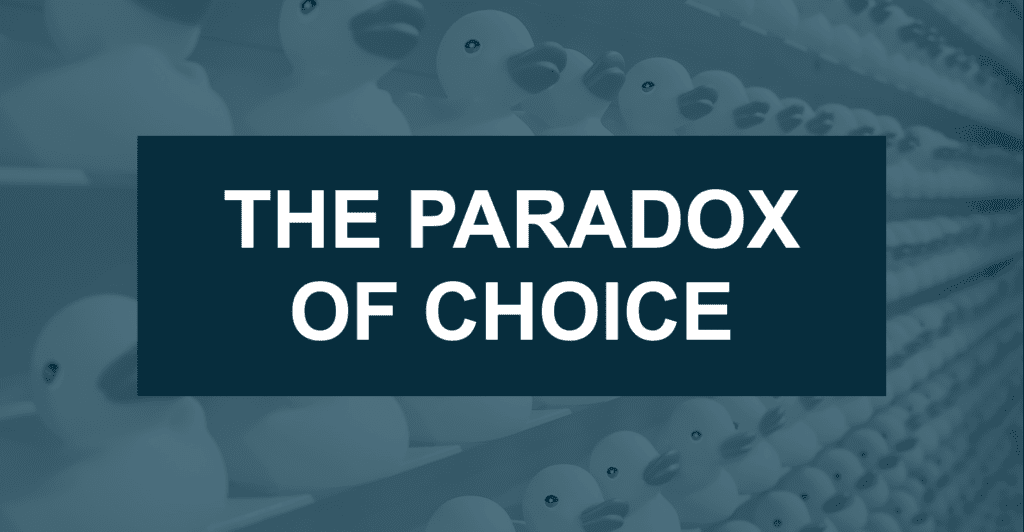
We live in a world with increasing amounts of choice – from 20+ jams at your local supermarket, to endless potential dates at the swipe of a screen. But having more options is always a good thing, right? Whilst it’s something companies often hear customers asking for, the reality is not so clear cut.
As consumer psychologists, we see time and time again how being faced with lots of alternatives often isn’t preferable for customers (even if they think and say it is)…
Choice Paralysis
As beings who are hardwired to conserve energy where possible, the cognitive and physical effort required to browse through and compare endless options can feeling overwhelming and unjustified (retailers selling hundreds of grey t-shirts, take note). In some instances, these feelings can lead to inaction, with no purchase being made at all. Arguably, not an ideal outcome for any retailer or manufacturer!
Buyer’s Remorse
Too much choice can also leave consumers feeling less satisfied and sometimes regretful once they’ve made a purchase. This sense of remorse comes about when people start dwelling on all the other options they could have had. With more options to choose from, there’s also more ‘could-have-beens’ to be remorseful about.
So, whilst customers may tell you they want more choice – contrary to popular belief – the customer isn’t always right. In line with everything the world of behavioural science has taught us, people, quite frankly, tend to be terrible at knowing what they want and what will influence their behaviour. However, credit where credit’s due, consumers have been conditioned to find ways to help manage the overwhelming levels of choice they are subject to. There are two strategies we commonly observe…
Brand Familiarity
Consumers will often stick with brands they know and trust. This is nothing to do with “brand loyalty” instead it’s simply because it allows them to make quick and easy decisions that they feel good about (because it feels safe). The tendency to opt for a familiar brand will often increase when a shopper is faced with excessive choice.
Slimline Selection
Often consumers will try to manage overwhelming levels of choice by narrowing their focus of attention. For example, we frequently see consumers focusing on products that have been recommended to them, are on promotion or sit within a price range they consider appropriate. This allows them to immediately and relatively effortless reduce the number of alternatives under consideration.
Facilitating these existing strategies and developing other coping mechanisms should help improve the customer experience and propensity to purchase.
The paradox of choice is just one example that highlights the dangers of relying on what customers claim they want. At Shift, we take a very different approach to understanding consumer behaviour. Want to find out more? Get in touch, we’d be delighted to help.